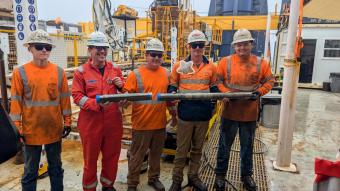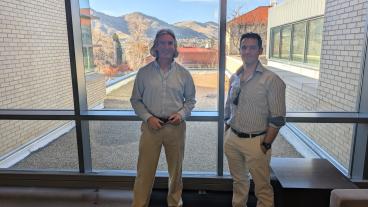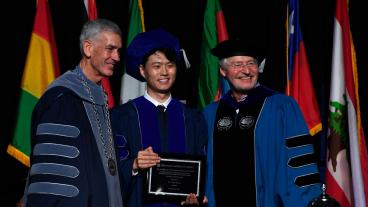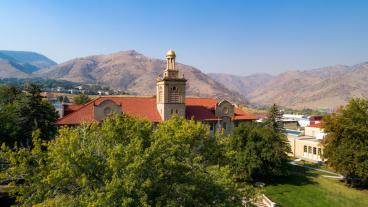Offshore phase of international expedition looking at fresh water under ocean floor wraps up
Mines Geophysics Professor Brandon Dugan is co-chief scientist on the collaboration between International Ocean Drilling Programme and U.S. National Science Foundation

Members of IODP³-NSF Expedition 501 “New England Shelf Hydrogeology” hold the final core from the final hole drilled during the international expedition's offshore operations. From left, the Boart Longyear team Chris Redding, Co-Chief scientist Brandon Dugan, Chandler Maine, Nick Boehne and Lalo Aguilar. (Photo by Everest@ECORD_IODP3_NSF)
74 days offshore, 718 cores, 871.83 meters of total core from three locations – this is the first outcome after the end of offshore operations of an international expedition to investigate fresh or freshened water under the ocean floor.
The goal of the expedition was to take samples not only of sediment cores, but also of the water stored in sediment, both sandy aquifers and clayey aquitards beneath the ocean floor. Their existence has been known for decades but they remained virtually unexplored – until now.
”We set out with lofty goals to understand the origin and age of this offshore freshened groundwater system through sampling of sediment and water in a difficult drilling environment consisting of sand and mud. With great teamwork among the science team, the technical staff, and the drilling crew, we managed to get great samples including through multiple groundwater pumping tests,” said Brandon Dugan, co-chief scientist of the expedition and professor and associate department head of geophysics at Colorado School of Mines. “Those tests were a critical to the expedition and a first for scientific ocean drilling. And we did it! Now we have the samples for the science team to really dive into the data and understand the system, which will be helpful for understanding other offshore freshened groundwater systems around the world.”
The expedition is a joint collaboration between the International Ocean Drilling Programme (IODP³) and the U.S. National Science Foundation (NSF). For the first time scientists managed to take water and sediment samples from beneath the ocean on the New England Shelf with the intention of understanding this offshore aquifer system.
During the expedition, the science team rotated on and off the Liftboat Robert transported by helicopter or supply vessel.
Next, the entire science team will meet for the onshore operations at the Bremen Core Repository at MARUM – Center for Marine Environmental Sciences at the University of Bremen (Germany) in January and February 2026 to split, sample and analyze the sediment cores and water collected.
The collected cores will also be archived and made accessible for further scientific research for the scientific community after a one year-moratorium period. All expedition data will be open access in the IODP³ MSP data portal in PANGAEA, and resulting outcomes will be published.
Learn more about the expedition on the European Consortium for Ocean Research Drilling (ECORD) website.




